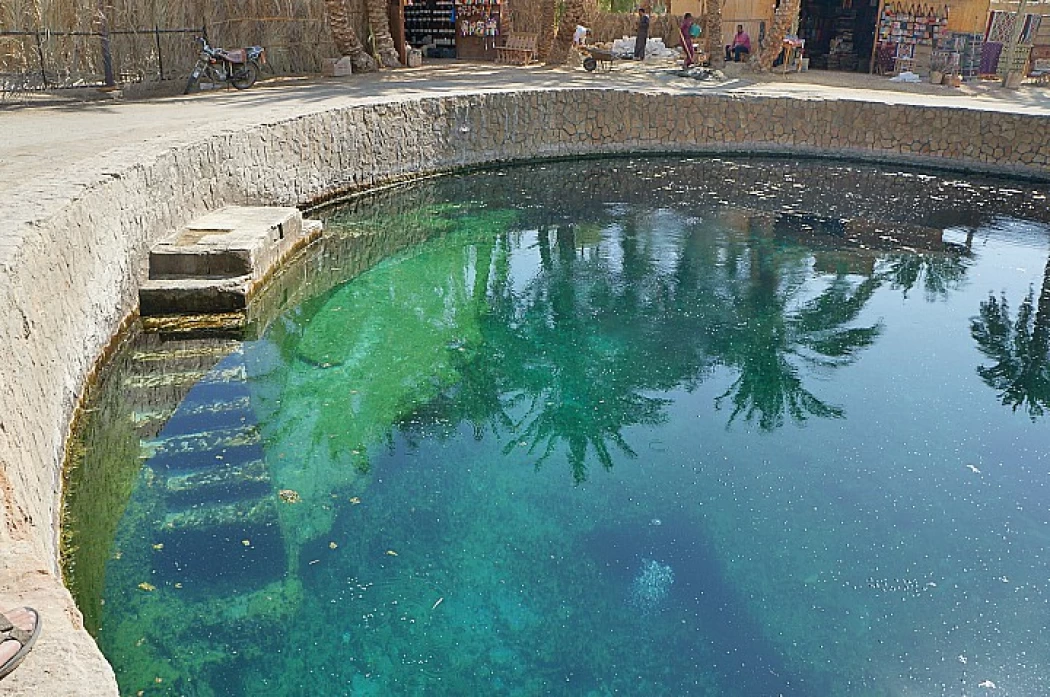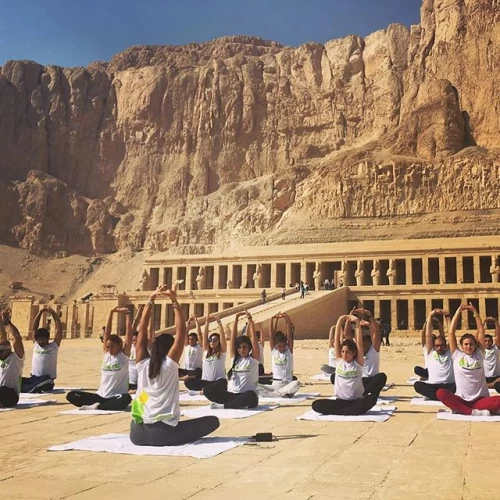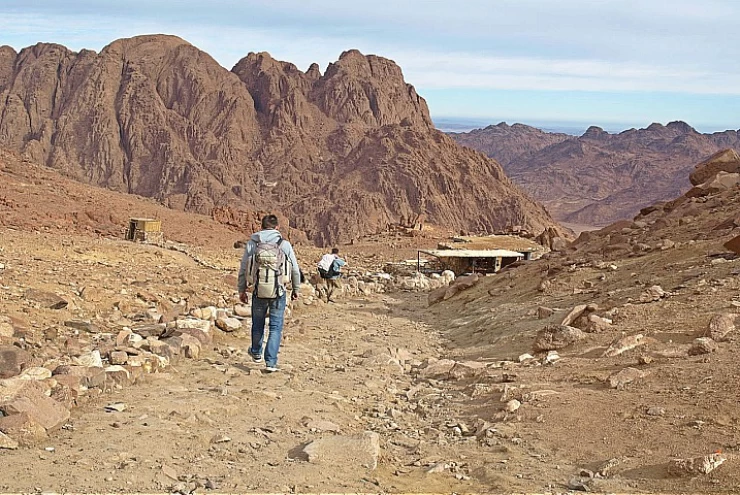
Manantiales de agua natural en Egipto
Egipto es conocido por sus ciudades, agua mineral y azufrada, clima seco y sin humedad, y su suelo de arena y limo, adecuado para el tratamiento de numerosas enfermedades, especialmente de la piel y cualquier enfermedad marcada por inflamación y dolor en las articulaciones, músculos, o tejido fibroso, especialmente artritis reumatoide. Y la multiplicidad de sus playas incluyendo las aguas de sus mares por sus distintivas propiedades naturales. Muchos ojos de azufre y minerales se esparcen en Egipto.
Esta agua natural también contiene varias sales minerales y algunos minerales de valor terapéutico como el carbonato de sodio y proporciones variables de algunos elementos metálicos. Es como el magnesio y el hierro, y se distingue por su profundidad, amplitud y temperatura que oscila entre los 30 y 70 grados centígrados. Los análisis de laboratorio han demostrado la proporción de salinidad en estos recursos hídricos naturales para la hospitalización, además de la disponibilidad de limo en los fondos de estos manantiales de agua azufrada con sus propiedades terapéuticas que curan muchas de las enfermedades óseas, enfermedades del sistema digestivo, respiratorio. sistema, enfermedades de la piel, etc. También se ha comprobado que es muy beneficioso en el caso de tratar pacientes con artritis por enterramiento en la arena. Ha pasado y producido económicamente en los últimos años, en el marco de un estricto control científico sobre calidad y especificaciones estándar.
Además de eso, la investigación ha confirmado que el agua del con su contenido químico y la presencia de arrecifes de coral en ella ayuda a recuperarse de la psoriasis, y por lo tanto hay muchas áreas turísticas que disfrutan de la ventaja de los viajes médicos en Egipto, que son áreas de antigua fama histórica como Helwan, Ain Al-Sirah, Al Ain Al Sokhna, Hurghada, Fayoum, la región de los oasis y Siwa The New Valley, Aswan, Sinai y, finalmente, la ciudad de Safaga, que se encuentra en la costa del Mar Rojo, al sur de Hurghada, que cuenta con todos los elementos del turismo médico, que se visita a través de paquetes turísticos egipcios, y su fama es que la arena negra tiene la capacidad de deshacerse de algunos pacientes de piel y la más famosa es la psoriasis.
El número de ojos naturales en Egipto es de 1450 ojos, fuentes y pozos que se extienden por todo Egipto al este y al oeste, algunos de los cuales se encuentran en el desierto occidental entrando en oasis y oasis marinos, incluido lo que se encuentra en El Cairo como el grupo de ojos Helwan y Ain Sirah, algunos de los cuales se encuentran en el desierto oriental, algunos de los cuales están en el Sinaí, como el manantial del faraón y el manantial de agua de Moisés, se encuentran entre las características del turismo médico en Egipto.
Hay muchos manantiales de agua natural que se extienden por todo Egipto, el más importante de los cuales es el oasis de Siwa, que se encuentra al oeste de Marsa Matrouh a unos 300 km. Ocupa la posición de vanguardia entre los lugares óptimos para el turismo médico y la hospitalización natural en Egipto y se caracteriza por la encantadora calma poética, la pureza del aire y la pureza del cielo, la temperatura suave, que se puede visitar con Cairo Top Tours reservando Egipto. Excursiones de un Día en El Cairo.
Egypt is known for its cities, mineral and sulfur water, dry, moisture-free weather, and soil of sand and silt, which is proper for treating numerous diseases, especially skin diseases and any disease marked by inflammation and pain in the joints, muscles, or fibrous tissue, especially rheumatoid arthritis. Due to its distinctive natural properties, Egypt has a multiplicity of beaches and seas. Many sulfur and mineral eyes are spread in Egypt.
Famed for its deserts and ancient wonders, have you heard about Egypt's natural water springs that induce relaxation and healing and wow with fabulous views? If you're interested in complete seclusion, soaking in warm mineral water, and an adventure in the desert, here are some of the best natural water springs in Egypt that are worth a visit.
This natural water also contains several mineral salts and some minerals of therapeutic value such as sodium carbonate and varying proportions of some metal elements. It is like magnesium and iron, and it is distinguished by its depth, amplitude, and temperature which ranges between 30 and 70 degrees Celsius.
Laboratory analyses have shown the proportion of salinity in these natural water resources for hospitalization, in addition to the availability of silt in the bottoms of these sulfur-water springs with its therapeutic properties that cure many bone diseases, diseases of the digestive system, respiratory system, skin diseases, etc. It has also been proven that it is very beneficial in the case of treating arthritis patients by burial in the sand. It has passed through and produced economically in recent years, within the framework of strict scientific control on quality and standard specifications.
The number of natural eyes in Egypt is 1450 eyes, fountains, and wells that spread throughout Egypt east and west, some of which are found in the Western Desert by entering oases and marine oases, including what is found in Cairo like the Helwan eyes group and Ain Sirah, some of which are in the Eastern Desert, some of which are in Sinai such as Pharaoh's spring and Moses water spring are among the features of medical tourism in Egypt.
Many natural water springs spread throughout Egypt, the most important of which is Siwa Oasis, which lies to the west of Marsa Matrouh by about 300 km. It occupies the forefront position among the optimal places for medical tourism and natural hospitalization in Egypt and is characterized by charming poetic calm, air purity, the purity of the sky, and mild temperature, which can be visited with Cairo Top Tours by booking Egypt day tours.
About 180 kilometers from Hammam Musa, there is a mountain cave in the city of Abu Zenima from which extremely hot sulfur springs erupt, with temperatures ranging between 55 and 75 degrees Celsius, reaching the boiling point.
The sulfur springs in Abu Zenima are known as «Pharaoh's Bath» and their hot water flows into the sea without benefiting from it. However, some tourism companies obtained approvals to exploit the area and transform it into a tourist and therapeutic resort, and began constructing concrete structures, but they were not completed.
Musa Baths are characterized by a temperature of 37 degrees throughout the year and their water is rich in sodium and magnesium. It is located in South Sinai, one of the most famous medical tourism places in the governorate.
Hammam Musa is located 5 kilometers from Tur Sinai –the capital of the governorate - surrounded by many palm trees, and has sulfurous waters with multiple mineral elements.
It is noteworthy that the sodium found in the water of Hammam Musa helps speed up wound healing, while magnesium helps the color cells in the skin regain their vitality, to restore the natural color of the skin, and has a strong effect on treating various skin diseases such as vitiligo, psoriasis, and skin tags.
















